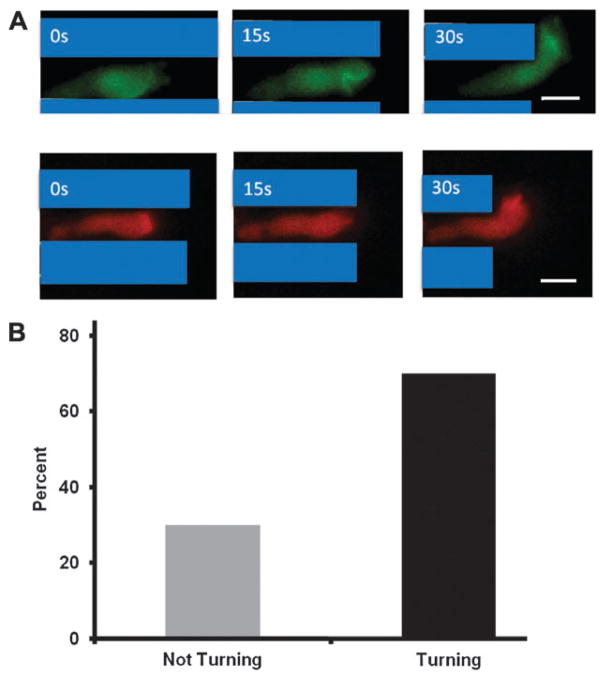Fig. 4.
The turning behavior of cells as they exit the narrow channels. (A) The leading edge of a cell has the capacity to sense a cAMP gradient across the midline and turn toward the attractant source. Depicted is a representative cell that exhibited turning behavior toward the cAMP-loaded micropipette. This cell was expressing PH-GFP (green) and LimE-RFP (red). The snapshots in A, B and C were three consecutive frames 15 s apart. Scale bar is 10 μm. (B) 70% of polarized cells turned their leading edge toward the micropipette as the cells exited the channels. Thirty cells (10 cells from 3 different days) were analyzed. For a positive turning result to be scored, the cells were not in contact with other cells and had at least 50% or less of the cell body outside of the channel.

